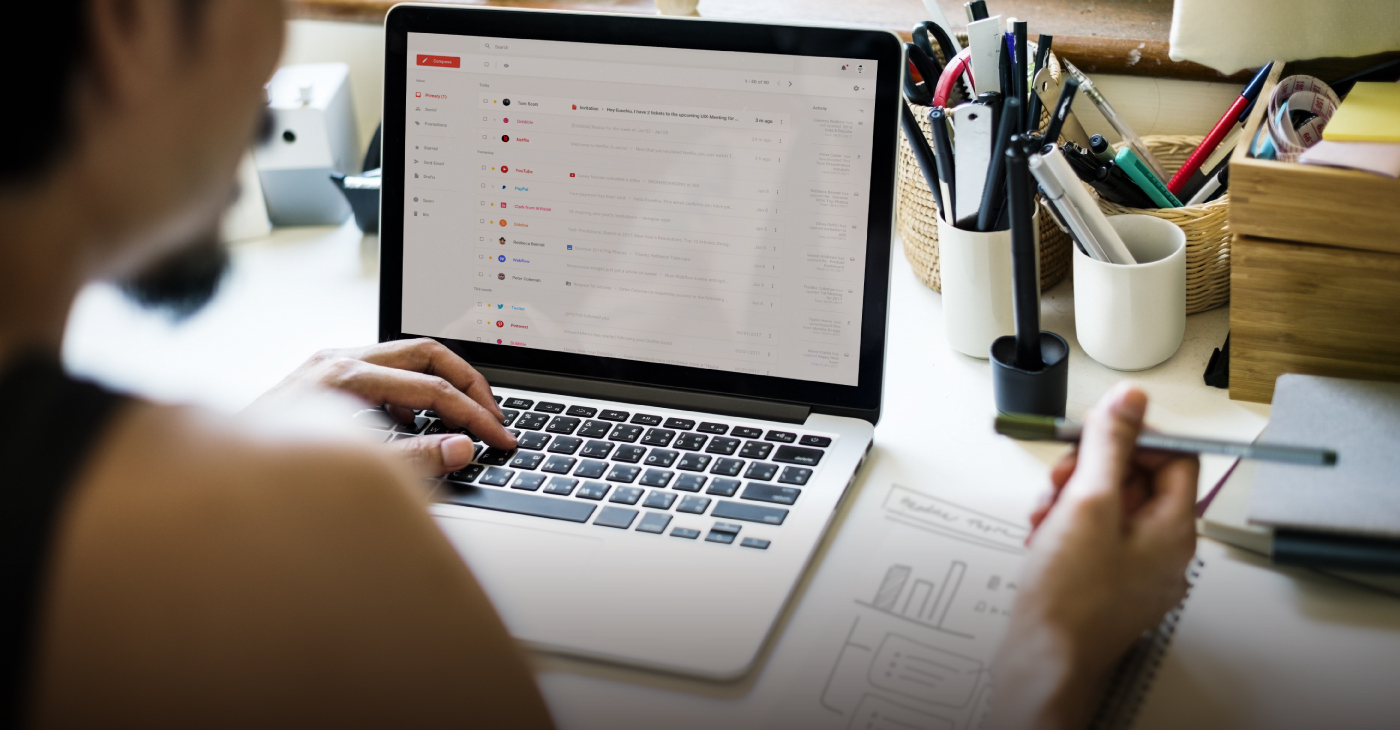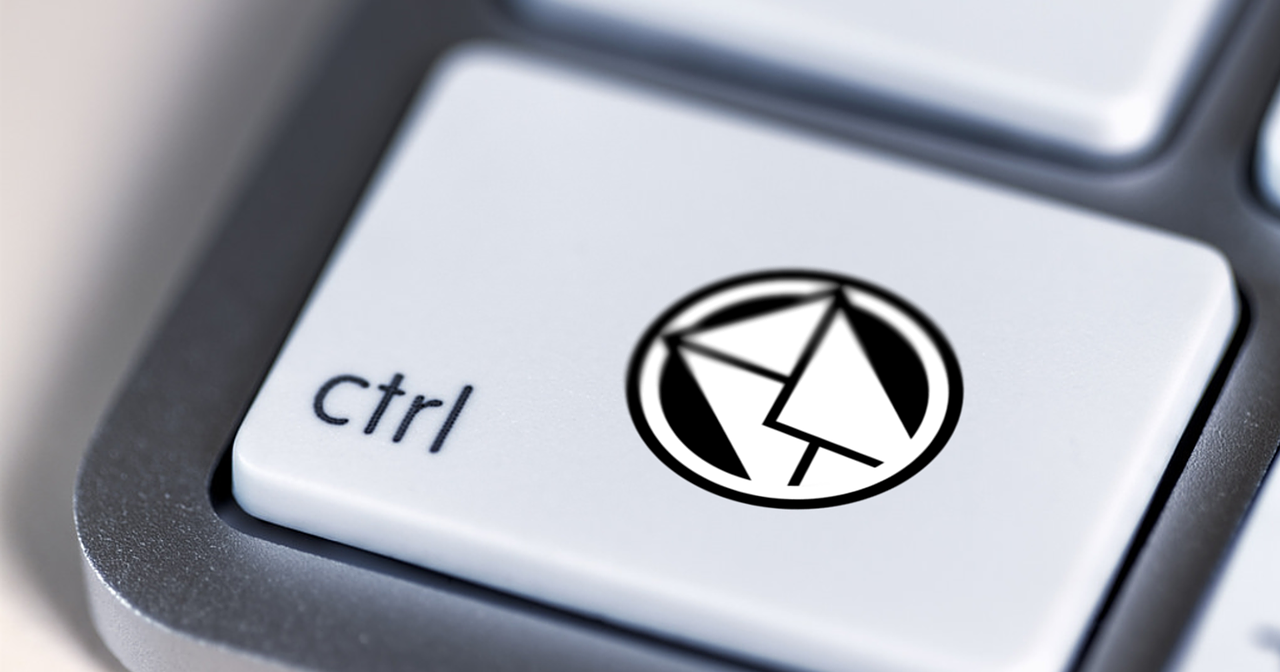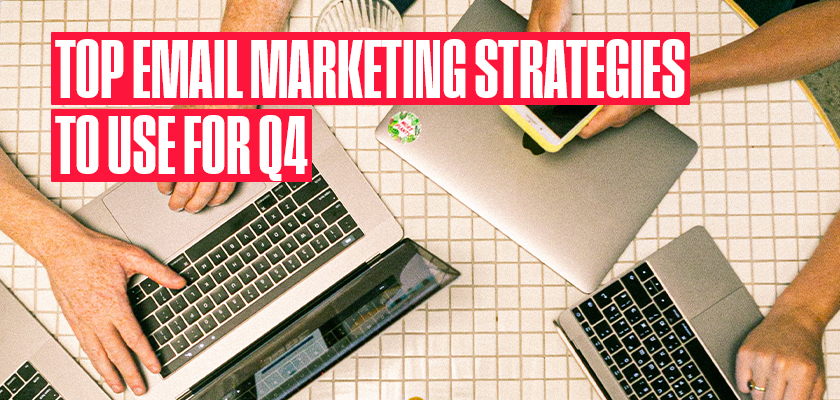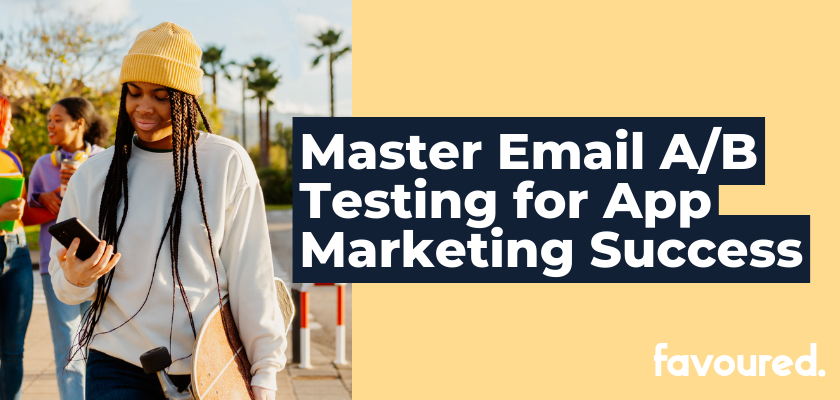EMAIL MARKETING
7 Important Ways to Get Your Online Business Ready for the Holidays

It’s the most wonderful time of year! Christmas is one of the biggest shopping seasons for retailers in-store and online. And while competition in the eCommerce space is pretty tight throughout the year, this is even more true during high-volume shopping periods. Brands need to stand out from the crowd in order to win sales and create long-term relationships with new customers.
The period between December 15 and 24 typically accounts for the bulk of all Christmas sales. That means there’s not much time left to get ready for the influx of orders, so we’ve put together a checklist to help you get prepared this holiday season. We know the days and weeks leading up to the holidays are a whirlwind for online retailers, but there are some tips that can make this years’ shopping season a little easier (and more profitable).
Stand Out This Holiday Season
Getting your store ready for the holidays takes a lot of dedicated planning months in advance. But even the weeks leading up to Christmas present plenty of opportunities to spruce up your store and make connections with consumers. Here are some tried and tested tips to help eCommerce businesses prepare for the busiest shopping days of the year:
Learn From Last Year
Before you do anything else, think back to last year’s holiday shopping season. Understanding what went well and what could have gone better is the first step to creating better processes moving forward. Here are some questions to ask to get the most out of your holiday review:
- What went really well?
- What didn’t go smoothly?
- What were your most popular products?
- Which days and hours had the highest traffic?
- What were your most successful marketing campaigns?
- Which marketing channels produced the most conversions?
- What were your best-performing keywords?
- How much revenue did you earn last season?
- What was the average order value?
- How did your competitors fare?
Finally, ask yourself what is different about this year from last year? Taking into account staffing changes, business restructuring, new suppliers, the shifting pandemic, and rebranding will all give you some indication about what will work best for your online store this season.
Get in the Holiday Spirit
Even though your store is online, you should still decorate for the holiday season! An undecorated page is unlikely to get much attention, especially since shoppers will be scrambling until the last minute to find the perfect gift for their loved ones.
You should update your landing pages with festive themes and include holiday-related promotions on your website leading up to the big day. It’s also important that online shoppers can easily find your holiday sales and gift sections, so be sure to make it very obvious where they can find these pages.
Optimize Your Website
Running and maintaining an online business means your website is your storefront. That’s why it’s crucial to hire a developer that can get your site looking and running its best. According to recent statistics, over half of all developers working today have under five years of experience under their belt. This means it’s easier than ever to land a developer who is up-to-date on the latest trends and frameworks.
Website optimization means making your website easy to use and easy on the eyes. Customers expect responsive web pages that load quickly, as well as simple navigation tools that allow them to get exactly where they need to be on your site.
Make it easy for visitors to buy things from your online store. For example, put the navigation at the top of the screen, and make holiday sections bold and bright. If you are offering discount codes, make sure they work as expected. These small adjustments will make your website better equipped to handle the holiday influx of traffic.
Increase Content Marketing Efforts
The holiday season is a chaotic time for online retailers, but it’s important to keep creating content. Content marketing is attention-grabbing, interactive, and can help build relationships with your customers. And with everyone’s marketing efforts at an all-time high, content marketing can help your brand get noticed by higher quality leads.
Content marketing can be anything from blog posts to Pinterest videos, Instagram giveaways to email marketing – anything that uses rich content to provide value to your customers. How-to videos, tips and tricks, and articles with relevant content are all great places to start.
And, of course, use your content to talk up your Christmas promotions. One study revealed that 44% of email recipients said a mass promotional email helped them make one or more purchasing decisions.
Update Your Mobile Experience
Don’t forget about your mobile shoppers! Not only are more people shopping online since the onset of the pandemic, but more people are using shopping apps on their phones to do so.
Simply being “mobile-friendly” just doesn’t cut it. Instead of rearranging your content so that it looks more uniform on mobile, use a responsive web design that is able to change according to what type of device is accessing your online store. Mobile optimized web pages will have larger buttons and smaller images as well as auto-fill forms and multiple screens to avoid endless scrolling.
What’s more, according to recent surveys, 71% of customers prefer to pay with a credit card. And now, even more, people are paying using apps like PayPal and Klarna. It’s important to make sure your payment gateway can accept many payment methods and works seamlessly on mobile devices.
Highlight Your Shipping and Return Policies
Research shows that 56% of millennials expect same-day and next-day delivery options. Shoppers that are cutting it close to Christmas day will probably realize that shipping time might be an issue. They will want to know when their packages will get there and if they can return them.
To avoid an influx of customer service tickets, highlight your shipping and return policies in several places where they will be seen by all visitors. Product pages, cart view pages, checkout portals, and even on your homepage are all great places to highlight these policies.
Bump Up the Customer Service
With the holiday season comes a spike in sales, which also means more customer service tickets.
Some companies bring on temporary, seasonal workers to get through the Christmas rush. Holiday staff are lifesavers, so make sure they feel like they are a crucial part of the team, even if only temporarily. A recent survey showed that when there is a low level of respect among workers, holiday staff are 26% more likely to quit. Plus, there could be some very talented individuals who have the potential to be long-term assets to your online business.
And if you haven’t already, you need to deploy a chatbot service on your homepage. According to one survey, 64% of consumers agree that 24/7 support is one of the biggest benefits of chatbots. It will also make it easier for your business to handle a large influx of customer communications by passing off easier tickets to bots.
Conclusion
The holiday season is a hectic time of year for online retailers, but the holiday spirit must carry on. Follow these tips before the biggest shopping week of the year, and you will have a much smoother experience. Get your online store ready to meet the needs of your customers, so they’ll be coming back for more in the New Year.
If you’re dragging your feet this year, check out our webinar recording for some tips for your last-minute holiday marketing campaign.
Author Bio
Lee Li is a project manager from ShenZhen, China. She currently lives in Singapore and works as a B2B copywriter. She has a decade of experience in the Chinese fintech startup space as a PM for TaoBao, MeitTuan and DouYin (now TikTok).
Seen at: Benchmarkemail.com
EMAIL MARKETING
Unveiling the Future of Email Marketing: 4 Trends to Revolutionize Engagement

In today’s fast-paced digital landscape, the efficacy of email marketing hinges not only on the delivery of messages but also on their ability to resonate with audiences and drive meaningful interactions. Gone are the days of generic blasts; instead, companies are increasingly turning to innovative strategies to captivate their subscribers. Here, we delve into four emerging trends poised to redefine the realm of email marketing, promising to elevate engagement and drive conversions.
1. User-Generated Content (UGC) Takes Center Stage
User-generated content (UGC) emerges as a potent tool in the arsenal of email marketers, facilitating authentic connections with audiences while amplifying brand visibility. From customer reviews to social media posts, UGC offers a dynamic and relatable portrayal of products and services, resonating with consumers in the era of “new sincerity.”
By harnessing UGC within newsletters, brands gain invaluable insights into consumer preferences and behaviors, fostering trust and credibility. Strategies such as incentivized contests or social media challenges empower users to contribute content willingly, fueling a steady stream of authentic engagement.
2. Augmented and Virtual Realities (AR/VR) Transform Experiences
Augmented reality (AR) and virtual reality (VR) technologies emerge as game-changers in the realm of email marketing, offering immersive experiences that captivate and compel audiences. While VR may require substantial investments and specialized equipment, AR presents a more accessible avenue for brands to showcase products and drive engagement.
From interactive product demonstrations to virtual try-on experiences, AR/VR initiatives promise to revolutionize email campaigns, offering users a glimpse into a digitally enhanced world. While technical constraints may limit current implementations, ongoing advancements herald a future where AR/VR seamlessly integrate into email communication, enriching brand experiences.
3. Omnichannel Integration Enhances Connectivity
The advent of omnichannel marketing heralds a new era of seamless connectivity, enabling brands to orchestrate cohesive experiences across diverse touchpoints. By unifying customer interactions across websites, offline stores, and email communications, businesses cultivate deeper insights and deliver personalized content tailored to individual preferences.
Omnichannel integration not only streamlines the customer journey but also fosters brand loyalty by offering consistent and personalized experiences. Whether browsing online, engaging in-store, or interacting via email, customers encounter a unified brand identity, enhancing engagement and driving conversions.
4. Hyper-Segmentation and Personalization Drive Relevance
In an age defined by personalized experiences, hyper-segmentation emerges as a cornerstone of effective email marketing strategies. By dissecting audiences into granular segments based on demographics, behaviors, and preferences, brands can deliver tailored content that resonates on a profound level.
Utilizing advanced email marketing platforms, businesses can leverage hyper-segmentation to craft personalized campaigns that speak directly to individual interests and needs. From dynamic product recommendations to targeted promotions, personalized emails foster a sense of relevance and exclusivity, driving engagement and fostering long-term customer relationships.
In conclusion, the future of email marketing lies in innovation and adaptation, with brands leveraging cutting-edge technologies and strategic approaches to engage audiences effectively. By embracing trends such as user-generated content, augmented reality, omnichannel integration, and hyper-segmentation, businesses can unlock new realms of engagement, driving meaningful interactions and fostering brand loyalty in an ever-evolving digital landscape.
EMAIL MARKETING
Top Email Marketing Strategies To Use For Q4

As we approach the Q4 period, it’s never too early to start preparing for your Black Friday and Cyber Monday email marketing strategy. Once Black Friday week hits, our inboxes are filled with a hurricane of brands fighting for attention, each with the ‘biggest’ and the ‘best’ offers you won’t get anywhere else.
To set your brand apart from the competition, it’s crucial to plan ahead. Over 60% of brands send out multiple emails over the course of the Black Friday/ Cyber Monday weekend, and it’s a perfect time to up your brand awareness ahead of the Christmas shopping season.
If you’re not sure where to start with Q4 planning or need some last-minute tips to enhance your strategy, we’ve outlined some top email marketing strategies to incorporate into your plans!
1. Send Pre-Black Friday Emails
Sending pre-Black Friday emails is great for keeping your brand at the forefront of people’s minds ahead of the big day. Not only will a pre-Black Friday email let your audience know about your upcoming event, but it will also ensure that your audience is regularly checking in on your brand throughout the Q4 period.
Additionally, sending pre-Black Friday emails is beneficial for A/B testing. Sending out different formats of emails with minor tweaks, such as the CTAs or subject lines, can help you determine what your audience is more likely to engage with so you can then tailor your Black Friday strategy accordingly.
2. Run a Lead Gen
It might seem like a given, but ahead of Black Friday, it’s beneficial to give your email list a much-needed boost. A simple but effective way to do this is to run a lead-generation advertising campaign. For example, offering your audience the chance to win a prize in return for submitting details, such as their email address, is a quick and easy way to increase your list size. Similarly, refreshing your pop-up on-site with an irresistible offer will also contribute to gaining new profiles.
3. Offer Something Unexpected
Email marketers only have 3 seconds to capture the attention of their readers, which isn’t surprising due to the amount of emails the average person will receive daily. If an email isn’t driving you to click on it, it swiftly gets forgotten about and lost within their inbox. Over Black Friday, to avoid this happening, make sure you’re offering something unexpected, whether that’s a mystery discount or a gift with each purchase!
One of the worst things you can do over Black Friday is to overcomplicate your promotions. If you’re offering multiple promotions and codes, things can get a bit too hectic. To make it as simple as possible, consider running a standard “up to” percentage amount. If you want to include a code, it helps to have this auto-applied at checkout to avoid customers dropping off if they input it incorrectly. In the design of your email, make sure the promotion is clearly highlighted within the design so it can’t be missed, and also referenced in the body copy and subject lines too!
5. Create An Effective Design
Creating an effective design is one thing, but how do you know what works? To improve your email campaigns, consider running an A/B test to pinpoint which elements of your design are improving the CTR and which are hindering it.
Highlighting metrics such as colour, font size, and CTAs can instantly impact whether people will click through or discard! If a consumer clicks on your email, you’ll have, on average, 11 seconds to keep their attention, so making sure your design stands out for the wave of other Black Friday content is key! Keep the design of your email reflective of your branding but with stand-out elements specifically for the shopping season.
6. Make Use Of CTAs
CTAs (call-to-action) are one of the most underrated parts of any email campaign, especially over the Black Friday period. They’re one of the driving forces behind making your email recipients turn into passive readers to customers. One key way to make your CTAs stand out is to make use of bright and bold colours that will attract and hold attention. Additionally, it’s important to think about the placement of your CTAs to increase your click-through rate, make sure the copy used is clear and concise (between two and five words) and use actionable language.
7. Focus On Subject Lines
Subject lines are make or break for every email campaign. Over Black Friday, consumers’ inboxes are cluttered with emails, so it’s important to stand out. It’s estimated that on Black Friday, 116.5 million emails from brands were sent out (more than any other day), and Black Friday sees the highest number of emails opened and clicked. To prevent your emails from being lost in the void, having a cracking subject line to stand out from competitors is everything.
The secret to a great subject line is to keep it short and snappy. On average, subject lines with 50 characters or less tend to get an average of 12% higher open rates and 75% higher click-through rates. Including emojis within subject lines has been seen to increase click-through-rates by as much as 28%!
Additionally, it helps to use language that will really pique your audience’s interest, stay away from any overused cliches and keep them as attention-grabbing as possible.
8. Prep for Cyber Monday
To plan an effective Black Friday, it’s crucial to prepare for Cyber events too. With Cyber following straight after, it’s easy to forget about it or not prioritise it as much as Black Friday, however, it’s still an extremely profitable day! To make the most of it, create dedicated campaigns and tailor your online sales messaging so that it focuses on driving urgency.
9. Incorporate SMS into Your Strategy
Sometimes the importance of SMS can be overlooked because a lot of brands assume that text messages won’t fit in with their brand. However, it’s a no-brainer for reaching even more customers. On average, 82% of people engage with marketing content on their smartphones, so it’s something to definitely explore, especially over the busy shopping period.
To gain SMS sign-ups, you can effectively tie your SMS campaign in with your lead generation and ask for customers to fill out their phone number as well as their email address. That way, they’ll be opted into your send list. It can also be used to send reminders when sales have launched or when offers are coming to a close.
Despite having only 160 characters to work with, SMS campaigns are longer than recommended email subject lines, so it can be just as, if not more effective than email marketing campaigns.
EMAIL MARKETING
Mastering Email A/B Testing for Mobile Apps: The Ultimate Guide

Welcome to the world of email A/B testing for mobile apps!
Here at Favoured, we’re all about delivering the best results for our clients, and that includes mastering the art of email marketing. In this guide, we’ll take you through the essentials of A/B testing your email campaigns to achieve maximum success for your mobile app.
What Is Email A/B Testing?
Email A/B testing, also known as split testing, is a method used to compare two or more variations of an email campaign to determine which one performs better. The goal is to identify the version that resonates most with your target audience, ultimately leading to higher open rates, click-through rates, and overall engagement.
In the context of mobile apps, email A/B testing can be particularly valuable, as it helps you fine-tune your marketing messages to drive user acquisition, engagement, and retention.
Benefits Of Email A/B Testing
There are numerous advantages to incorporating A/B testing into your email marketing strategy for mobile apps. Some of the key benefits include:
- Improved open rates: By testing different subject lines, you can identify which ones capture your audience’s attention and entice them to open your emails.
- Increased click-through rates: Experimenting with various email elements, such as CTAs and layout, can help you determine the most effective ways to encourage recipients to take action.
- Enhanced engagement: A/B testing allows you to create more relevant and engaging content for your target audience, resulting in higher conversion rates and stronger user relationships.
- Data-driven decision making: With A/B testing, you can make informed decisions based on actual user behaviour, rather than relying on assumptions or gut feelings.
Key Metrics To Track
When conducting email A/B tests, it’s essential to track specific metrics to gauge the success of your campaigns. Some of the most critical metrics to monitor include:
- Open rate: The percentage of recipients who open your email. This metric can help you evaluate the effectiveness of your subject lines.
- Click-through rate (CTR): The percentage of recipients who click on a link within your email. A high CTR can indicate that your email content is engaging and relevant.
- Conversion rate: The percentage of recipients who take the desired action after clicking a link in your email, such as downloading your app, making a purchase, or signing up for a newsletter.
- Unsubscribe rate: The percentage of recipients who opt out of receiving future emails from you. A high unsubscribe rate may suggest that your email content is not resonating with your audience.
Understanding the basics of email A/B testing is the first step towards optimising your mobile app marketing campaigns. By grasping the concept, benefits, and key metrics of A/B testing, you’ll be well-equipped to make data-driven decisions that drive real results for your mobile app.
Setting Up Your Test
Defining Your Goal
Before you start setting up your A/B test, it’s crucial to determine the primary objective of your test. Having a clear goal will help you focus your efforts and make data-driven decisions based on the results. Your goal should align with your overall mobile app marketing strategy and be specific, measurable, attainable, relevant, and time-bound (SMART). Examples of goals for email A/B tests include:
- Increasing the open rate by 10% within 30 days
- Boosting the click-through rate by 15% within 60 days
- Reducing the unsubscribe rate by 5% within 45 days
Selecting Variables To Test
Once you’ve set your goal, it’s time to choose the variables to test in your email campaign. The variables you select should have a direct impact on your goal and be something you can measure. Here are some common email elements to consider testing:
- Subject lines: Test different wording, phrasing, or personalisation techniques to capture your audience’s attention.
- Email content: Experiment with different content styles, lengths, or structures to see what resonates with your recipients.
- Call-to-action (CTA): Try various CTA placements, wording, or button designs to encourage users to take the desired action.
- Images and visuals: Test different images, colours, or visual layouts to determine which one drives higher engagement.
- Personalisation: Compare personalised content, such as using the recipient’s name, to generic content to assess its impact on your metrics.
Creating Variations
Now that you’ve chosen your variables, it’s time to create the variations for your email campaigns. Keep the following tips in mind when crafting your variations:
- Limit the number of variations: While it may be tempting to test multiple variations, it’s best to limit yourself to two or three, so you don’t dilute your results or prolong the testing process.
- Make distinct changes: Ensure the variations are different enough to provide meaningful insights. For instance, if testing subject lines, one could be a question, while the other could be a statement.
- Keep other elements consistent: To ensure accurate results, only change the variable you’re testing and keep all other elements the same across variations.
- Consider your audience: When creating variations, take into account your target audience’s preferences and behaviours to craft relevant and engaging content.
Setting up an A/B test for your mobile app’s email campaigns is an essential step towards optimising your marketing efforts. By defining your goal, selecting the right variables to test, and creating effective variations, you’ll be well on your way to enhancing your app’s performance and building stronger relationships with your users.
Implementing & Analysing Your Test
Test Duration & Sample Size
Determining the optimal test duration and sample size is crucial for obtaining accurate and reliable results. Here are some factors to consider when deciding on these parameters:
- Test duration: The length of your test should be long enough to gather sufficient data, but not so long that it delays your marketing efforts. Generally, a test duration of 7 to 14 days is recommended for most email A/B tests.
- Sample size: Your sample size should be large enough to provide statistically significant results. Use an A/B test sample size calculator to determine the appropriate size based on your desired confidence level and the expected difference between variations.
Keep in mind that these recommendations may vary depending on your specific circumstances, such as the size of your email list or the frequency of your email campaigns.
Launching Your Test
Once you’ve determined the test duration and sample size, it’s time to launch your A/B test. Follow these steps to ensure a smooth test launch:
- Segment your email list: Divide your email list into random, equal-sized groups to ensure a fair comparison between variations.
- Send your variations: Schedule your email campaign to send the different variations to the corresponding segments of your email list.
- Monitor the progress: Keep an eye on the key metrics, such as open rates, click-through rates, and conversion rates, throughout the test duration to ensure everything is running smoothly.
Analysing Results & Drawing Conclusions
After your test has concluded, it’s essential to analyse the data, draw conclusions, and apply your findings to future email campaigns. Here’s how to go about it:
- Review the data: Examine the key metrics for each variation and compare them to determine which one performed better.
- Check for statistical significance: Use an A/B test calculator to ensure the differences between the variations are statistically significant, indicating that the results are not due to random chance.
- Draw conclusions: Based on the data, determine what you’ve learned from the test and how it can inform your future email marketing efforts. For instance, if a specific subject line format led to higher open rates, consider using a similar approach in future campaigns.
- Apply your findings: Incorporate your learnings into your email marketing strategy to continually optimise your campaigns and drive better results for your mobile app.
Implementing and analysing your email A/B tests is a critical step towards optimising your mobile app marketing campaigns. By determining the appropriate test duration and sample size, launching your test, and analysing the results, you’ll be able to make data-driven decisions that enhance your app’s performance and foster stronger relationships with your users.
Best Practices
Consistent Testing
To achieve long-term success in email marketing for mobile apps, it’s crucial to make A/B testing a consistent part of your strategy. Regular testing allows you to:
- Continuously optimise your campaigns: Stay ahead of the curve by continually refining your email campaigns based on data-driven insights.
- Adapt to changing trends: Keep your email marketing efforts relevant and up-to-date by adapting to evolving user preferences, industry trends, and market dynamics.
- Validate new ideas: Use A/B testing to validate new marketing concepts or tactics before fully implementing them in your campaigns.
Avoiding Common Pitfalls
As with any marketing endeavour, there are potential pitfalls to watch out for when conducting email A/B tests. Here are some common mistakes and how to avoid them:
- Testing too many variables at once: Focus on testing one variable at a time to ensure accurate results and avoid confusion when analysing the data.
- Ignoring statistical significance: Make sure your test results are statistically significant to avoid drawing conclusions based on random chance or insufficient data.
- Focusing solely on short-term gains: While it’s essential to optimise for immediate results, also consider the long-term impact of your email marketing strategy on user retention and lifetime value.
Utilising Automation & Growth Hacking Strategies
Leveraging automation and growth hacking techniques can help streamline your email A/B testing efforts and drive even better results for your mobile app. Consider the following strategies:
- Email automation: Use email marketing automation tools to schedule and send your A/B tests, track key metrics, and segment your email list efficiently.
- Dynamic content: Implement dynamic content in your email campaigns to personalise messages based on user behaviour, preferences, or demographics, and A/B test the effectiveness of various personalisation techniques.
- Multivariate testing: Once you’re comfortable with A/B testing, consider using multivariate testing to assess the impact of multiple variables simultaneously and identify the best combination of elements for your campaigns.
Mastering email A/B testing for your mobile app is an ongoing process that requires consistent effort, learning, and adaptation. By following best practices, avoiding common pitfalls, and utilising automation and growth hacking strategies, you’ll be well on your way to achieving long-term success in your email marketing campaigns.
As a data-driven full-funnel marketing agency, Favoured believes in the power of optimising every aspect of the customer journey, and that includes email marketing.
We’re dedicated to helping businesses drive real results, and A/B testing plays a crucial role in this process. Reach out if you want to supercharge your email campaigns with us. Happy testing!
-

 WORDPRESS6 days ago
WORDPRESS6 days agoTurkish startup ikas attracts $20M for its e-commerce platform designed for small businesses
-

 PPC7 days ago
PPC7 days ago31 Ready-to-Go Mother’s Day Messages for Social Media, Email, & More
-

 PPC7 days ago
PPC7 days agoA History of Google AdWords and Google Ads: Revolutionizing Digital Advertising & Marketing Since 2000
-

 MARKETING5 days ago
MARKETING5 days agoRoundel Media Studio: What to Expect From Target’s New Self-Service Platform
-

 SEO5 days ago
SEO5 days agoGoogle Limits News Links In California Over Proposed ‘Link Tax’ Law
-

 MARKETING6 days ago
MARKETING6 days agoUnlocking the Power of AI Transcription for Enhanced Content Marketing Strategies
-

 SEARCHENGINES6 days ago
SEARCHENGINES6 days agoGoogle Search Results Can Be Harmful & Dangerous In Some Cases
-
SEARCHENGINES5 days ago
Daily Search Forum Recap: April 12, 2024











You must be logged in to post a comment Login